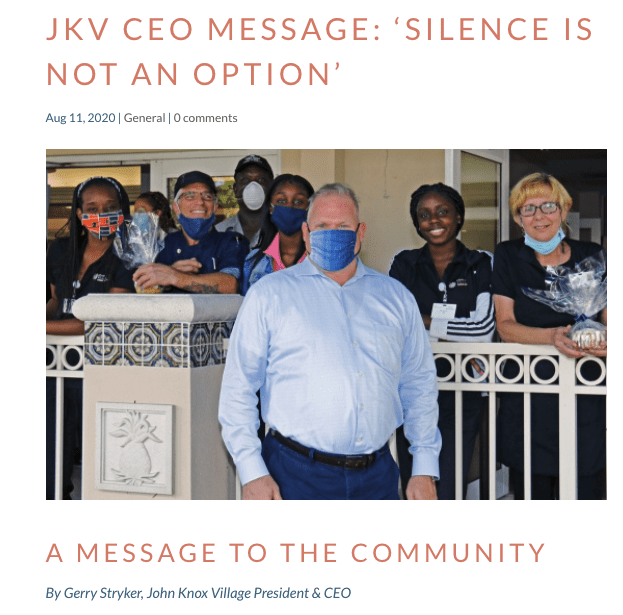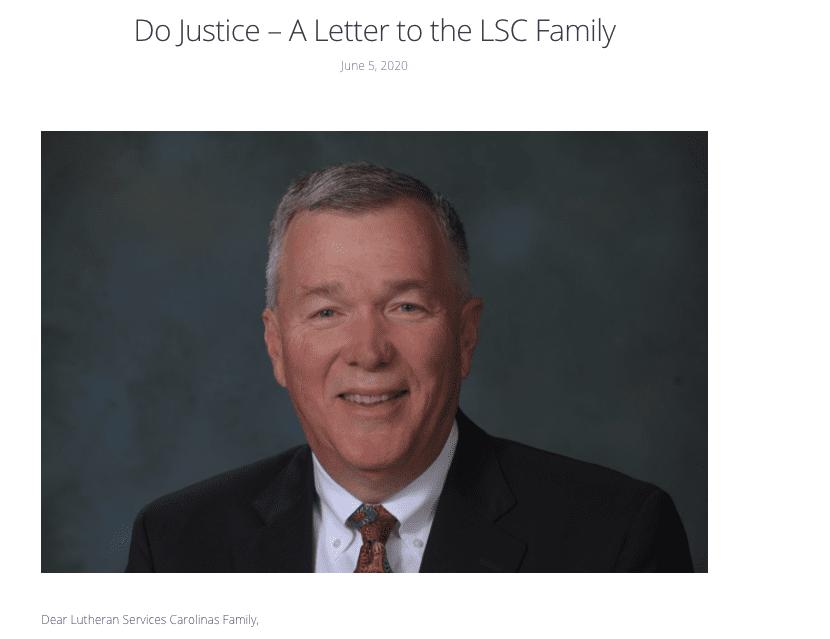By Rob Love, President & CEO
As we look ahead to 2021, many things are vying for priority on your and your team’s “to-do” lists. Of course, completing the COVID-19 vaccination process tops the list today, and questions about census recovery and/or future growth are on many of your minds.
I believe that, if your community or organization has not already begun its diversity journey, it is important that you make it one of your higher priorities.
I use the word “journey” with great intention. Working to build a culture of diversity, equity and inclusion in your organization is not a switch you can turn “on” and be done. It’s a process that involves an intentional approach with a great deal of education and listening, and one that will likely take years to complete—if it ever can truly be considered complete.
Over the past decade, I’ve worked with several communities that wanted to increase diversity, but with the primary (and sometimes sole) goal of increasing the number of African American residents. While that is an admirable goal, it’s like going straight from step 1 to step 100 in the process. In most communities, so much needs to be done first to become a place where all will feel accepted and be comfortable calling the community “home.” And such a goal does not even recognize that creating a culture of diversity, equity and inclusion goes far beyond skin color and encompasses people of various religions and gender identities—types of diversity that many communities have been successful at building, with increased racial diversity still a future goal.
The first steps in the journey are typically focused on education: education of the board, of management, of staff and of residents. As with most things in life, listening and understanding are the keys to creating positive change. Over time, organizations can evolve their boards and management teams to become more diverse, leading the change process by example.
Jeff Hutchins, former CEO of Penick Village, in Southern Pines, North Carolina, shared some of the steps his community took as it began its journey. In addition to presentations and discussions, residents and staff traveled to various locations to learn more. One trip in 2017 went to Washington, DC, where they visited the National Museum of African American History and Culture, the Martin Luther King Jr. Memorial, the Frederick Douglass House and more. Another trip in 2019 went to The King Center and the Carter Center in Atlanta, the Dexter Avenue King Memorial Baptist Church in Montgomery, Alabama, where Martin Luther King was pastor, and the National Memorial of Peace and Justice, also in Montgomery.
Ken Partin, CEO of Givens Communities in Asheville, North Carolina, shared that his organization began its efforts with a focus on the LGBT community, feeling that it could advance there first, with a racial focus requiring more time. Givens initiated a task force, completed SAGECare training and received SAGECare certification as the educational activities were rolled out to the board, staff and residents.
Both Jeff Hutchins and Ken Partin shared that the groundwork they had done in their communities paved the way for meaningful discussions among staff and residents about many prominent issues in 2020, including:
- That Black Lives Matter does not mean that black lives are more important than others, or that all lives are not important. It simply means that black lives deserve the same attention, consideration and treatment as any other skin color.
- That “defund the police” does not mean eliminating police departments. It means restructuring funding of civil services to ensure the appropriate people are providing the appropriate services, such as mental health professionals responding to mental health situations.
- That institutional racism is not a thing of the past. It is how the past has had—and continues to have—a tremendous impact on people of color today. For example, not many people in the communities knew that African American soldiers were not able to take advantage of the benefits of the GI bill after WWII, or how for several decades the Federal Housing Administration used redlining to restrict African Americans from buying homes.
As residents, staff, management and board members each gained a better understanding of the issues and questions, both Jeff Hutchins and Ken Partin shared that—had COVID-19 not restricted activities—many more staff members and residents would have participated in the peaceful rallies.
Which leads to my primary point: If you have not already begun your diversity journey, why is 2021 the right time to start?
At the risk of dramatically overstating the obvious, our country is facing a cultural divide that, in my 60 years on the planet, rivals only the combined effects of the civil rights and Vietnam War movements in the mid to late 1960s. Today, there is so much need to build a better understanding of words and terms related to race and equity, with polarized interpretations of those terms exacerbating tensions instead of helping.
Note: I admire my friends, Ted Goins, CEO of Lutheran Services Carolinas, and Gerry Stryker, CEO of John Knox Village in Pompano Beach Florida, for taking public stands on this in the summer of 2020.
Now is the time to foster communication and education, and to build a foundation on which our organizations and communities can be positive thought leaders in our greater communities. It is a time that our country needs healing, and healing can only begin through better understanding.
Wondering where to start? Organizations like Aldersgate, in Charlotte, and Broadmead, in Baltimore, have created leadership positions focused on diversity and inclusion. I know they would be willing to share their experiences with you.
I wish you all the best on your diversity journey. It’s a trip well worth taking.






